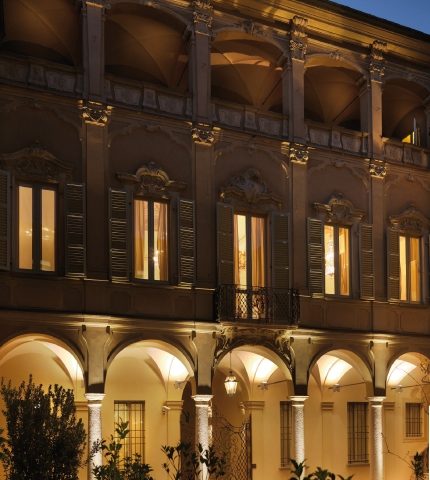Primavera a Palazzo Rota Pisaroni: ultimo appuntamento
Primavera in città: visite guidate con aperitivo finale
4 Giugno 2012
VENERDI’ PIACENTINI 2012
16 Giugno 2012PRIMAVERA A PALAZZO
Ultima apertura straordinaria del Palazzo Rota Pisaroni sede della Fondazione di Piacenza e Vigevano.
[pullquote] PIACENZA: UN TESORO DA SCOPRIRE.
10 giugno: prenota subito il tour guidato in Centro Città con aperitivo finale a 14 euro! Per saperne di più, clicca qui.
[/pullquote]
La città di Piacenza è ricca di tesori, spesso celati dietro le mura degli splendidi palazzi nobiliari.
Per la primavera 2012, Atlante propone l’apertura straordinaria del Palazzo Rota Pisaroni, edificio del XVIII secolo tra i più eleganti e preziosi della città.
Il percorso di visita guidata, rivolto principalmente a piccoli gruppi e viaggiatori individuali, comprende il cortile, lo scalone d’onore, il salone di rappresentanza e l’alcova.
In evidenza: gli affreschi di Mussi e Alessandri e la serie di fiori di Margherita Caffi
domenica 10 giugno
Ritrovo ore 15.30 nel cortile di Palazzo Gotico (Piazza Cavalli, Piacenza)
costo 3.50 eur cad
INFO E PRENOTAZIONI
cell. 334 1553061
info@atlanteguide.it
[pullquote_wrapper size=”full”]
[quote style=”blqv3″]Per rimanere sempre aggiornato sulle nostre iniziative, iscriviti alla newsletter e seguici su Facebook e Twitter [/quote]
[/pullquote_wrapper]
Spring at the Palace
Special opening of the Palazzo Rota Pisaroni, the headquarters of the Piacenza and Vigevano Foundation.
Guided visits to one of the most beautiful 18th-century palazzi in Piacenza. The tour includes the courtyard, the grand staircase, the great hall and the alcove.
On display are the frescoes by Mussi and Alessandri, as well as the series of paintings of flowers by Margherita Caffi.
Saturday 31 March
Saturday 21 April
Sunday 6 May
Sunday 10 June
Meeting place: 3.30 pm in the courtyard of the Palazzo Gotico
Cost: €3.50 per person
Information and bookings: 334 155 3061
info@atlanteguide.it
PALAZZO ROTA PISARONI IN PIACENZA
“Giuseppe Rota built this house from the foundations, he decorated it and finished it in every detail in 1762.”This inscription under the central balcony reminds the visitor who was the creator of all this beauty.
The palace became very famous about 1830, when it was sold to the opera singer Rosmunda Pisaroni, who transformed it into her home and made it the “elegant drawing room” of Piacenza, receiving many of the leading artistic and cultural figures of the time.
The façade is three stories high, with windows enlivened with stucco decoration, masks and shells that take up in their sinuous lines the curves of the cornice marking the division between floors. The historian Ferdinando Arisi describes the outside of the palazzo: “The entrance in pink granite is a jewel of the roccoco, as is the balcony that encircles it and the spider’s web of wrought iron that forms an airy parapet ….”
The interior is laid out on the U plan typical of the palazzi of Piacenza. The entrance block is very interesting, made up of a portico with five openings, a loggia above, and opposite, the staircase with double opposing ramps, open to the courtyard.
Inside, the great hall or salone is certainly the room tht attracts most attention, with its complex and refined decoration. In the centre of the ceiling is the Fall of Phaeton, surrounded by a painted cornice, the work of Luigi Mussi (Piacenza 1694-1771).Twenty other paintings decorate the walls, among them the splendid still lifes with flowers, fruit and animals by Margherita Caffi.
The alcove, on the other hand, has stupendous stucco decoration; the small room has a double chandelier and a secret entrance.




